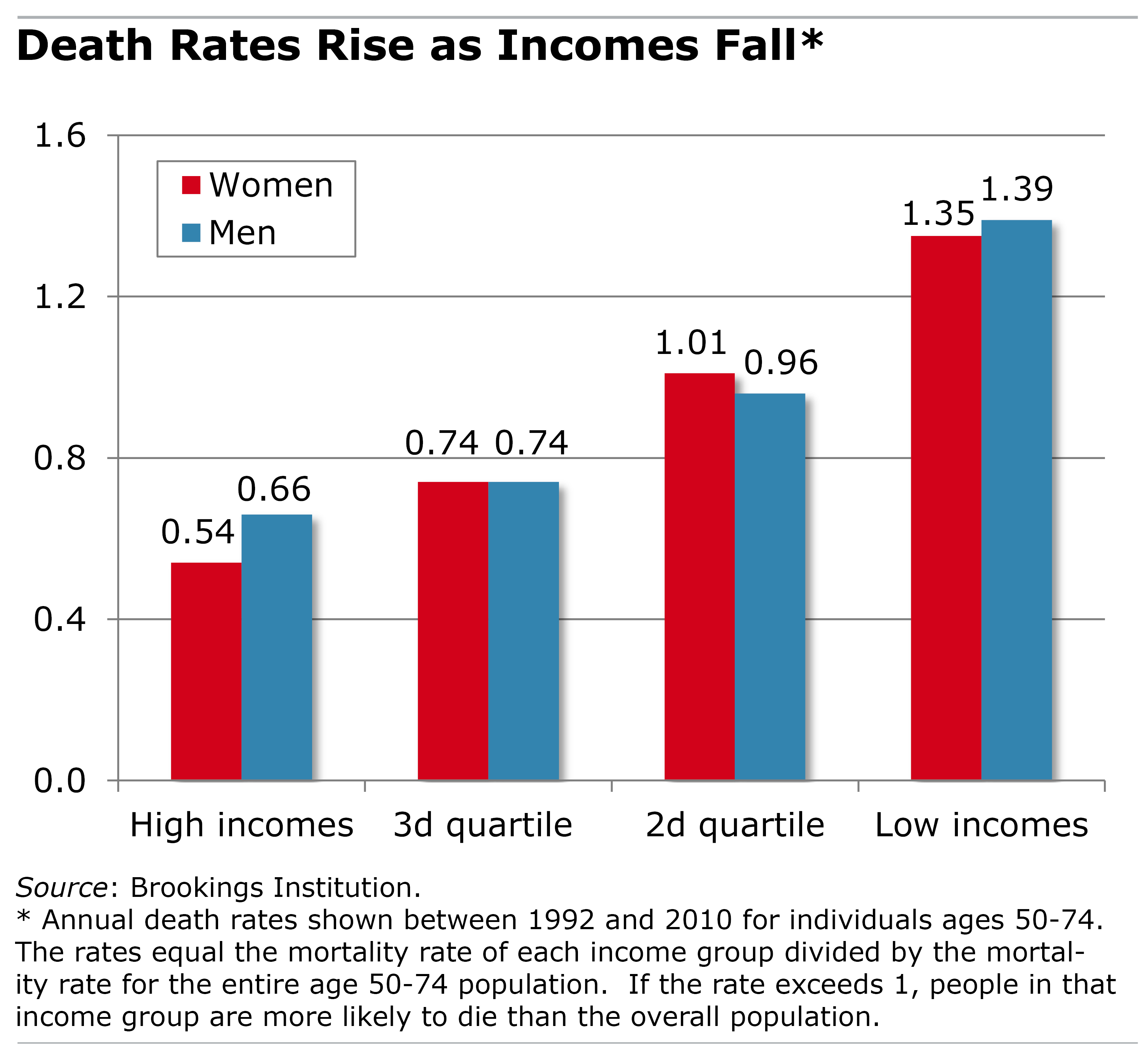
Income and Disparate Death Rates
The differences in Americans’ longevity, depending on one’s income level, are striking.
The annual death rates for 50- to 74-year-old men and women with the lowest earnings are more than double what they are for high earners.
This gap in life spans, which is well-documented in the research literature, has been growing with each new generation. A recent study digs deeper to uncover specific ailments, such as heart disease, that may be driving the growing disparity.
 Brookings Institution researchers Barry Bosworth, Gary Burtless, and Kan Zhang used data from a nationally representative sample of almost 32,000 older Americans that included the causes of individual deaths occurring between 1992 and 2010. The survey contains detailed information about the cause and timing of the deaths, as well as interviews with family of the survey participants after they die.
Brookings Institution researchers Barry Bosworth, Gary Burtless, and Kan Zhang used data from a nationally representative sample of almost 32,000 older Americans that included the causes of individual deaths occurring between 1992 and 2010. The survey contains detailed information about the cause and timing of the deaths, as well as interviews with family of the survey participants after they die.
The researchers compared the mortality rates linked to specific diseases for high- and low income people, defined as those whose earnings in their prime working years fell either above or below the median, or middle, income. They found that the risk of dying from the nation’s leading causes of death – cancer and heart conditions – has declined significantly for high-income Americans, both men and women. No such improvements were evident, however, for low-income men and women.
When they examined other causes of death, they found a differential pattern of mortality change that also contributed to the widening gap. Low-income individuals have experienced an increase in their risk of dying from a broad range of illnesses, from allergies, hay fever, and tonsillitis to digestive tract illnesses and unspecified causes. But the risk from many of these diseases has not increased for high-income men and women.
It’s increasingly clear that many Americans face an inequity rooted in their lower station in life – worse odds than people above them on the socioeconomic ladder that they will live well into old age.
The research reported herein was performed pursuant to a grant from the U.S. Social Security Administration (SSA) funded as part of the Retirement Research Consortium. The opinions and conclusions expressed are solely those of the author(s) and do not represent the opinions or policy of SSA or any agency of the federal government. Neither the United States Government nor any agency thereof, nor any of their employees, makes any warranty, express or implied, or assumes any legal liability or responsibility for the accuracy, completeness, or usefulness of the contents of this report. Reference herein to any specific commercial product, process or service by trade name, trademark, manufacturer, or otherwise does not necessarily constitute or imply endorsement, recommendation or favoring by the United States Government or any agency thereof.
Comments are closed.







Has this analysis been carried out by racial/ethnic groups?
Jimmy,
This research paper analyzed income and educational level only.
Thank you for the question – Kim (blog writer)
I would like to try and study mortality rates for pensioners (retirees) who are receiving their monthly income from a DB pension plan versus those receiving their income (in whatever form) from a general CAP: could be a DC plan, a 401(k), an IRA etc. I would also like to be able to stratify the data by income level so as to not confuse just being wealthy as a causal factor of enhanced life expectancy. What I want to draw out is the impact of the robustness and predictability of retirement income and mortality rates.
Do such data exist? If so, how might one get access to these data?
Thanks for any help you can provide.
R Brown